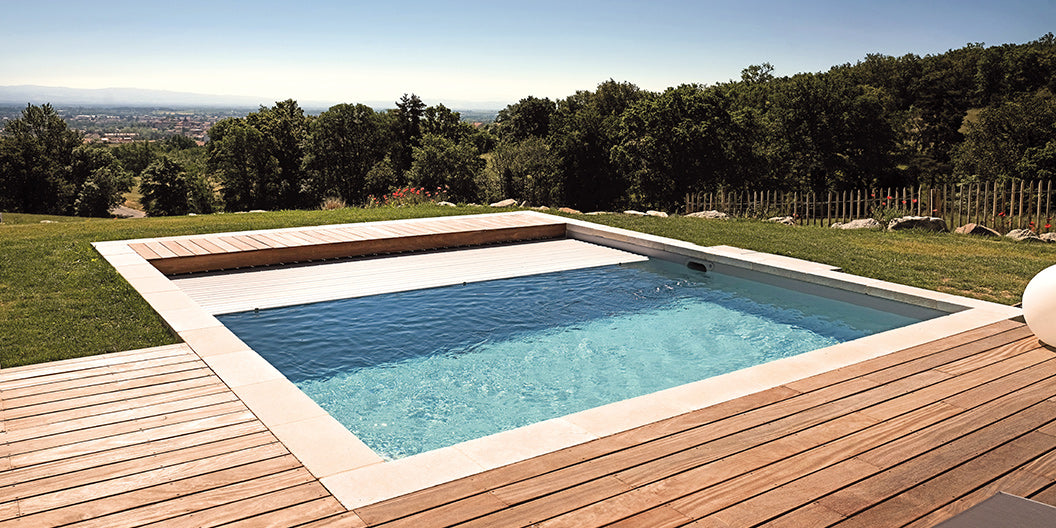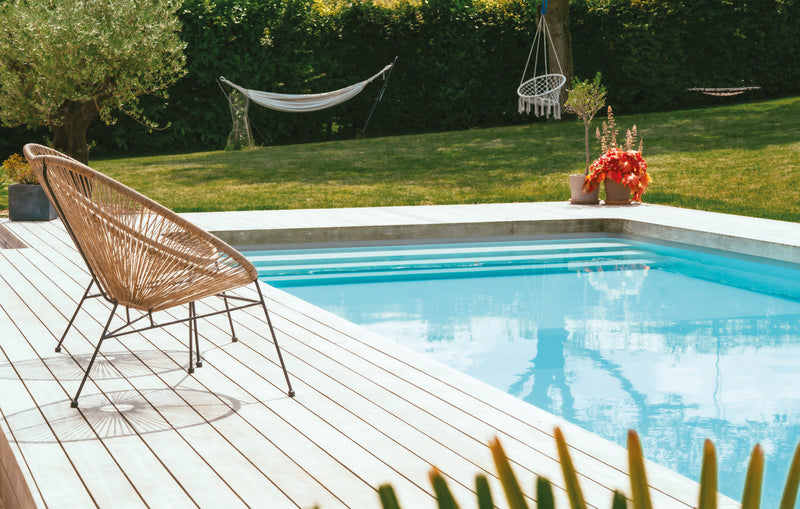- Welcome
- Desjoyaux advice
- fr_FR
-
How to choose the right security device?
How to choose the right security device?
Posté leAll owners of a private, in-ground or semi-in-ground outdoor swimming pool for family use must comply with the law of January 3, 2003, relating to swimming pool safety. This law requires owners to install a device designed to prevent the risk of drowning.

The 4 safety devices
The swimming pool barrier: NF P 90306
Installed around the pool to limit access, the barrier constitutes a physical obstacle to accessing the body of water. It is a safety device that can be used in all seasons.
The pool alarm: NF P 90307
There are two types of alarms : immersion detectors and perimeter alarms. The immersion alarm, positioned on the edge or under the edge, detects the fall of a body into the pool. The perimeter alarm, positioned around the pool perimeter, is triggered as soon as the beam that delimits the secure area is crossed.
These safety devices require rapid intervention as soon as the siren is triggered.
The security cover: NF P 90308
Safety covers that comply with the NF P 90308 standard are divided into two main categories:
- Rigid covers or shutters, either above ground or submerged. Motorized (or manual), shutters allow for easy pool security.
- Soft covers: This category includes the slatted cover, which is an all-season product, and opaque and net covers, which are safe winter covers (their installation is more tedious than that of a slatted cover).
The swimming pool shelter: NF P 90309
A pool enclosure is a set of structures assembled together and placed on the decks. Once closed and locked, the pool enclosure closes off all access to the pool. There is a wide range of pool enclosures available to suit different budgets and uses:
- The residential shelter : a real living space, it allows the pool to be used in all seasons and offers all the advantages of other shelters.
- The flat shelter: Almost as discreet as a roller shutter, it protects the pool from external pollution and will also allow the water to be heated thanks to the greenhouse effect.
- The low shelter : Aesthetic, easy to handle with or without motorization, it protects your swimming pool from external pollution and heats the pool water.
- The mid-height shelter : Its undeniable advantage is the fact that you can swim whatever the weather in water heated by the greenhouse effect.
Things to consider when making the right choice
Faced with these four security devices, it's difficult to make the right choice. Aside from the financial aspect (the immersion alarm being the most affordable), the table below lists the advantages and disadvantages of each device.
| Product | Benefits | Disadvantages |
| Immersion alarm | Attractive price | Prevents falls -> Requires rapid intervention |
| Perimeter alarm | Discreet | Involves rapid intervention when the security perimeter is breached. |
| Pool barrier | Prevents access to the pool | Visible device |
| Automatic covers | All-season productAestheticsOpens and secures the pool with a turn of the keyProtects the pool from external pollutionOption of control over the electrolyser to adapt chlorine production | Price |
| Bar cover | All-season productAttractive priceEasy maintenance | Handling (motorization available as an option) |
| Winter covers | Perfectly secures the pool during winter | Involves the implementation of another safety product in summer |
| Pool shelter | Complete range (from flat shelters to residential shelters) and different prices depending on the modelAll-season productEasy to handleProtects the pool from external pollutionAllows you to increase the water temperature by up to 8°C Possibility of swimming under the shelter (depending on model) |
Price |
To choose the product best suited to your needs, it is important to take into account the following recommendation: immersion or perimeter alarms are not suitable for swimming pools in secondary residences.

